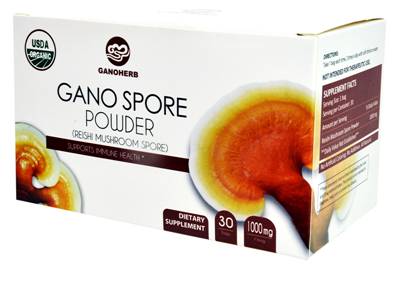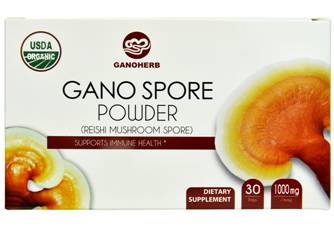Food quality and hygiene have the most direct connection with sterilization equipment, and self-sterilization for food is also called internal pollution control. It is a popular sterilization technology and equipment for solid food, liquid food, powder food and meat products. Mainly for the following:
1. Microwave sterilization: The microwave is an electromagnetic wave with a frequency from 300MHz to 300GMHz. The process by which microwaves interact directly with materials to convert ultra-high frequency electromagnetic waves into heat. Microwave sterilization is the result of a combination of microwave thermal effects and biological effects. The potential distribution of the microwave membrane on the cross section of the bacterial membrane affects the concentration of electrons and ions around the cell, thereby changing the permeability of the cell membrane. The bacteria are thus malnourished, cannot be normally metabolized, and growth and development are hindered to death. From a biochemical point of view, nucleic acids (RNA) and deoxyribonucleic acid (DNA), which are normally grown and propagated by bacteria, are crimped macromolecules in which several hydrogen bonds are tightly linked. Microwaves cause hydrogen bond relaxation, cleavage and recombination, thereby inducing genetics or Chromosomal aberrations, even breaks. Microwave sterilization is the use of electromagnetic field effects and biological effects to kill microorganisms. The use of microwave devices has obvious advantages in sterilization temperature, sterilization time, product quality maintenance, product shelf life and energy saving. It is suitable for packaged bread, jam, sausage, pot cake, snacks, and insecticide, eggs, etc. in storage.
Second, high-pressure sterilization technology: the food is placed in the liquid medium, after adding a pressure of 100MPa-1000MPa for a period of time, like heating, the process of killing microorganisms in food. Autoclaving avoids the various drawbacks that affect the quality of food that occur during heat treatment, and maintains the original flavor, color and nutritional value of the food. Due to the instantaneous compression process of the liquid medium, the sterilization is uniform, no pollution, safe operation, and low energy consumption compared with the heating method, thereby reducing environmental pollution. Suitable for processing meat, eggs, soy protein, fruit, spices, milk, juice, mineral water, beer and other items.
Third, pasteurization method: Pasteurization refers to a relatively low temperature heat treatment method, using hot water as a heat transfer medium. The sterilization conditions are 61 to 63 ° C, 30 min, or 72 to 75 ° C, 10 to 15 min. When heating, it should be noted that the surface temperature of the material is 4~5 °C lower than the internal temperature; the product produced by pasteurization has a short shelf life, long production time, and the production process is discontinuous. Change, so generally only suitable for fresh milk production enterprises.
4. Low-temperature sterilization: Low-temperature sterilization is a heating method that partially sterilizes microorganisms present in food. A temperature of 100 ° C or less is usually used. Since the bacteria in the food remain after the low-temperature sterilization, in order to prolong the shelf life of the product, processing techniques such as refrigeration, fermentation, addition of additives, and deoxidation are used. This method is mainly applicable to acidic foods with a pH below 4.5 and foods that are significantly deteriorated by heat treatment. In recent years, this method has also been applied to milk and commodities with a short shelf life.
Five, ultra-high temperature instant sterilization: referred to as UHT sterilization. Generally, the heating temperature is 125-150 ° C, the heating time is 2-8 s, and the sterilization process of the product after the heating reaches the commercial sterility requirement is called UHT sterilization. This sterilization method can achieve the purpose of sterilization in an instant, and the sterilization effect is particularly good, and the sterilization requirement can be almost reached or close to the sterilization, and the chemical change caused is small. It has the advantages of improving processing capacity, saving energy, reducing equipment volume, stabilizing product quality, and implementing non-disassembled cycle cleaning of equipment in situ. It has now evolved into a high-tech food sterilization technology.
Ganoderma Extract (Ganoderma Lucidum extract/Reishi mushroom extract) is extracted from top-graded organic shell-broken Ganoderma Lucidum spore powder using advanced modern technology. Spores are the seeds of Ganoderma Lucidum. When it matures, the spores are released from the mushroom cap. They are also where most of the nutrients of Ganoderma Lucidum are contained. In order to allow the nutrients inside the spore powder to be fully absorbed by human body, we used a patented technology called low temperature physical shell-breaking technology to crack the cell wall of Ganoderma Lucidum spore powder.

The Ganoderma we used for this product comes from our self-built organic Ganoderma farm at Mt. Wuyi. Both the farm and the GMP workshop have acquired organic certifications from 4 countries and regions including Chinese, Japan, the US, and the EU. We do not use any type of herbicide, pesticide, or chemical fertilizer during the whole cultivation process, delivering the best and safest product to our customers.

By using extraction technology, we can increase the concentration of Ganoderma polysaccharides and triterpenes in the product. Reishi Mushroom Powder polysaccharides and triterpenes both work together to enhance human’s immune system, fighting against diseases and infections. Also, Ganoderma can help protect the liver, increase sleep quality as well as relive stress.
Ganoderma Extract
Ganoderma Extract,Reishi Spore Powder,Ganoderma Lucidum Powder,Ganoderma Lucidum
Ganoherb International Inc. , http://www.ganoherb.us